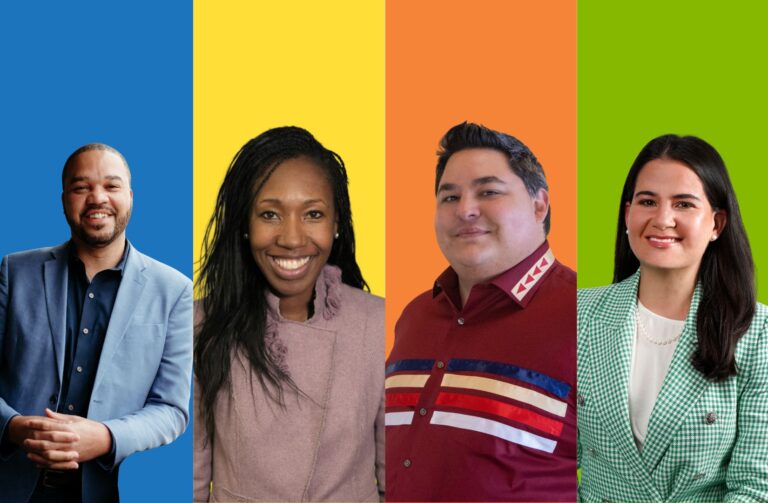How to Write the Perfect Story for Social Change…a work in progress
“What stories have you heard this morning?” Paul asked.
I thought, “It’s 9 o’clock in the morning. I just got here. I haven’t had time to hear any stories.” But then he asked the question a different way. “Did you listen to the news on the way in or hear about a friend’s date in the elevator?”
He was right. We had all heard a story in some way that morning. But until he asked, few of us would have thought about it that way. The question he posed was a good reminder. After all, it was the reason the 50 of us were there.
Each one of us – whether we were from a foundation or a nonprofit or media organization – wanted to know how to create a more powerful story. We needed stories that would spur people to action.
For me that would be a story about how to help a family – two generations at once – build a better future.
Our guide in this quest was Paul VanDeCarr from Working Narratives, an expert in crafting stories for change.
His ingredients for the perfect story were simple, almost ordinary:
• A protagonist;
• Conflict or barriers;
• Choices;
• Goals; and an
• Ending
But writing a good story is not that simple even if you have the ingredients. If it were, the nonprofit world would probably have more stories and fewer fact sheets. But I gave it some thought.
First the protagonist: hmmm…there are 32 million children living in low-income families – far too many. Any one of them could be the protagonist. But whom should I choose? And for my two-generation story, I would need two protagonists, because at least one of her parents would have to have a co-starring role (or at least a supporting actress role meaty enough to win an Academy Award). Were two stars allowed? I decided not to ask.
The next ingredient was barriers. That unfortunately is all too easy. There are plenty of barriers for families seeking a way out of poverty and for the organizations trying to help them. Inflexible funding streams, organizational priorities that serve children or parents but do not yet see the rationale for serving both, gaps in the evidence base that show why helping two generations makes a difference, jobs with low wages and no benefits, lack of good child care. The list goes on.
Choices: Any protagonist I select would make choices every day as she navigates through systems and institutions to scrape together child care, a job with a decent wage, the money to pay for job training or a college degree, or a home in a safer neighborhood.
And the goals? The parents we have talked to want the best for their children. They know an education is the way to help their children get ahead. Some of them need to be convinced that they should seek an education for themselves too – to enter a career that will pay the bills and build some stability in their lives. At the same time, we need to work with policy makers and program designers to lower the barriers – from debt to child care and transportation – parents face in pursuing opportunities for themselves and their families
Ending: In the end, the choices are theirs. But those of us working in the policy sphere need to make choices too. What types of programs should we design? What is the best use of our resources? Who are the allies we need to enlist?
And most importantly for me today, how do we tell stories with the power to create change for families?
Like my story above, the ending on two-generation solutions still needs to be written. We all have a lot of work to do. But while I wrestle with the ingredients for my story, it is good to know that people across the country – parents, organizations, public leaders, and other storytellers – are doing great work to build an America in which the American dream is still within reach: an America in which a legacy of opportunity passes from one generation to the next.
Epilogue: For more on the power of stories, check out Storyline, a new section of Washingtonpost.com “dedicated to the power of stories to help us understand complicated, critical things.” It is edited by Jim Tankersley.
Related Posts


